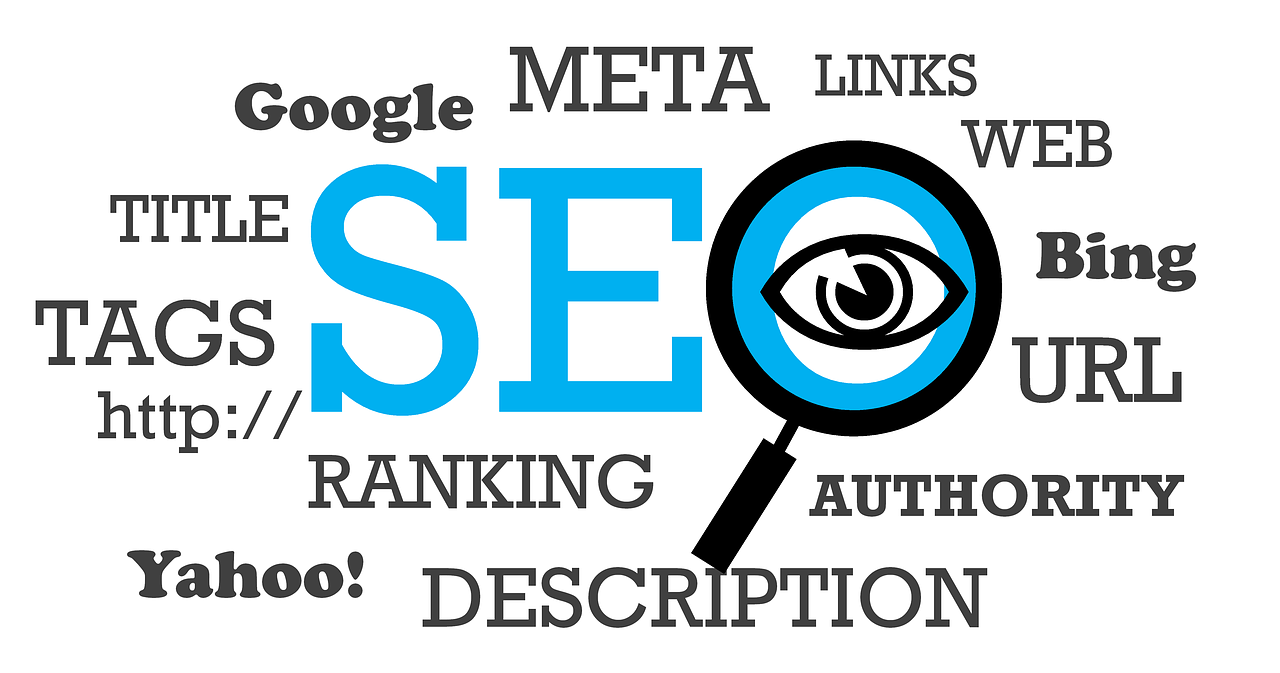Google is getting smarter every year, and so are all search engines. Still, it won’t simply “get” what you’re trying to say, or which audience you’re trying to reach. You need to give it a few pointers.

That’s why you’ll need to conduct keyword research for SEO (the right way) if you want your eCommerce business to be found by your potential customers in an ocean of pages.
Keywords, as you probably already know, are what searchers type in as search queries, such as “how to make cookies from scratch?” or “what’s the population of China?” or “women’s shoes for work”. It’s whatever you type when looking for information, entertainment, a product to buy, or a specific company or site, for instance.
You can (and should) conduct keyword research for your whole website or for standalone blog posts. Even for eCommerce sites, it’s important to write informational posts to engage the audience and guide them towards the sale.
It’s a time-consuming process, no sugar-coating here. But after the research your writing will become more targeted, flow much more easily, and you’ll have a much higher chance of appearing on top of the Search Engine Results Page (SERP).
Keyword research gives search engines and your readers the knowledge of what your page is about, making it easier to navigate.
That’s what makes it such a crucial process in digital marketing.
The term people search for must be on the page, so your searchers know they’re in the right place and know exactly what to do. And for organic search engine rankings, that’s a score.
So if your page is about women’s running shoes, search engines will expect to see the term “women’s running shoes” somewhere on the page (hopefully on top of it), as well as terms related to it throughout the body copy.
One misconception about “keywords”, especially for beginners, is about them being simply words, like “coffee” or “clothes”. That’s untrue.
Some people even call them “keyword phrases” or “keyphrases” because people know that ranking for lone words such as “shoes” is virtually impossible when there are over 6 billion active websites out there. (Scroll down to learn more about head keywords/head terms).
As a little disclaimer, conducting keyword research isn’t a guarantee that you’ll reach top positions, though it will give you an edge over the competition. Remember that Google prioritises YMYL (Your Money or Your Life) sites like medical sites, as well as authoritative sources. It won’t be overnight success. Positioning for one page or one blog post in the top 10 results is already a great achievement.
This article will teach you how to brainstorm keyword ideas, how to pick the right keywords, where to place them, and how to organise them. But before we jump in, there are a few concepts you must understand.
If you already know the basics, feel free to skip to the how-to section below.
Head vs. Long-Tail Keywords (and Why Prefer the Latter)
Imagine the keyword spectrum as a long-tailed animal. At the tip of the “tail” are the terms consisting of 4 or more words–these are the long-tail keywords.
The shorter terms consisting of 1 or 2 words are called “head” keywords, or head terms.
Here’s the definition for each:
Head: these are general terms, like “motorcycle gear”. They look good on homepages and category/subcategory links to give Google and your visitor direction as a labelling system, but aren’t great from a ranking standpoint, as they’re general and too competitive.
Of course, if you’re writing about motorcycles, you’ll obviously want to include the word “motorcycles” in your copy. But don’t expect it to be among the top 10, or 20, or even 40th page for the search query “motorcycles”. There are a whole lot of websites writing about them from all possible angles.
Long-tail: The more long-tail the keyword, the more specific the search will be. These are terms like “best places to visit in Mexico this summer” or “how to know if an egg has gone bad”. As you can see, they usually contain 4 or more words.
It’s much easier to rank for these terms because they’re much less competitive. When there’s less competition and you write about it with authority, your ranking chances go up because you’ll be pulling targeted traffic, even if the monthly searches are low.
There’s also what we call “body terms”, which stand right there in the chunky middle between 3 and 4 terms.
Search Intent
Let’s say you wanted to go on a trip to Paris, and wanted to check out hotel prices.
What search query would you type into the box?
You wouldn’t search for “Paris”. That’s a fact. You know, even if you’ve never studied SEO, that searching for “Paris” wouldn’t give you the answer you need. You’d need to search for “trips to Paris”, at the very least.
Search intent is about that.
Google has even coined the term “micro-moments”, which are the moments during the day when you grab your phone and say “let me look that up”. You could be searching for an answer or looking for a certain product.
The point here is, micro-moments are closely linked to searcher’s intent. Intent is the reason behind the search, and there are three main types of intent:
Informational: You’re looking for answers to your questions. These types of searches usually include “how to”, “why”, “what”.
Transactional: These searches usually happen when you’re close to buying. You’d usually include “buy X” or “compare X and Y” or even “homes for sale in X”.
Navigational: This one happens when you’re trying to go directly to a site, like when you type Facebook.com.
Be careful with unclear intent. For instance, someone looking for “Nottingham properties” could be trying to learn about the real estate market, as well as a property for sale. A person looking for “comfy leggings” is likely not interested in the history of comfy leggings–they probably want to buy comfy leggings. Pay attention.
Now you can start building your first keyword list.
Start With a Keyword Seed List
Whether it is for a whole website or for a blog post, you’ll want to start off with a big old list. Granted, your list will be shorter for a blog post than for an entire website, but keyword research is equally important in both cases.
Depending on how many pages your site has, your seed list could contain hundreds or thousands of keywords. There’s no right number here.
Not all of the keywords will be perfect, but think of it as a first draft: you’ll cut the fat later.
The first step is to put yourself in your customer’s shoes. If you were them, what searches would you make to find your services/products? What questions would they have? For example, if you sell SEO learning resources (such as courses and webinars), a chunk of your seed list could look a bit like this:
SEO courses
SEO webinars
Why you should learn SEO
Keyword research certification course
How to do keyword research for SEO
If you’re looking to attract local traffic, don’t forget to add state and city as keywords, as well, (e.g. tools company in Nottingham, UK)
A pro tip is to add keywords that reflect the entire buying cycle in all three phases: Awareness, Consideration, and Purchase.
For the awareness phase, you should add overarching keywords–the most basic keywords that outline what you offer. These would go on your home and category pages. (SEO courses)
For the consideration phase, focus on longer-tail keywords. These would go on articles, blog posts, FAQs, and review pages. (Why you should learn SEO)
Finally, for the purchase phase, you would focus on keywords that reflect your product or service. These should go to your product and service pages. (Keyword research certification course)
Where to Find Keyword Ideas
There are many useful ways to fish for keyword ideas. One of them is Google itself.
As you’ve already noticed, once you start typing on the search box, Google comes up with a lot of suggestions before you even finish typing.
These searches appear because people are looking for them, every single day. It’s Google telling you “hey, people want to know about this stuff”. These auto-completed searches are research gold–don’t ignore them.
You can also scroll down to the bottom of the page where you’ll see even more search suggestions.
Some search queries will have the “People Also Ask” box, but just because the questions are already answered by another website, that doesn’t mean you can’t answer those questions in your own content. In fact, you should: Google’s mission is to make the world’s information useful. For that to happen, you must sane the searchers’ doubts.
For question-oriented keywords, visit forums like Reddit or Quora and try to find questions about your business that pop over and over again. Then, answer them in your content.
Keyword research tools like SEMRush, SpyFu, and Moz also offer ample related-keyword metrics you could add to your list.
For question-oriented longer-tail terms, Answer The Public is a gem. It displays a variety of search-based keywords containing why, when, how, and what questions so you’ll have a range of terms to choose from.
Refine Your List by Analysing Volume and Competition
The more competitive a keyword is, the harder it will be to rank for. And the more people search for a term on a monthly basis, the higher the volume will be.
The “sweet middle” for a keyword is high search volume and low competition. And don’t forget to always consider the intent.
Does that mean you should abandon a keyword because it has a low volume? Not at all! In fact, if a keyword makes sense in your writing (as in it doesn’t sound weird) and flows smoothly within the context, go for it. After all, you will have a lot of other keywords in your content that will naturally have a higher search volume and lower competition, and they, too, could drive traffic to the page.
Also, you can try to rank for a more competitive keyword if your site is authoritative enough to compete with the “big guys”.
Not only your most important keywords will drive traffic. Even though your most important keyword could be “SEO content strategy”, you could very well position for “SEO content writing services” and drive traffic that way. The goal is exactly this: to include as many keywords as the content supports (besides your focus keywords) to pull traffic from them.
(Scroll down to learn more about focus keywords)
Torn between two or more keywords? Here’s what to do.
- Look at the SERP for that keyword. What comes up? Does the content from the top results match the content of your page? If not, let it go.
- Is there too much competition on top (rich snippets, local maps, people also ask)? If yes, even if you position in the top 10 results, a lot of people might have their answers answered before clicking any links. In this case, if you really want traffic, go for the less competitive keyword.
- Is the intent clear? If one of them has a mixed intent, go for the one with a clearer intent.
Selecting Your Focus Keyword(s)
You can have up to three focus keywords for a single page.
Your focus keywords should reflect the main focus of your page, whether that’s a landing page, product page, or blog post. Again, there’s no guarantee that you’ll rank for those keywords. But in SEO, it’s not just about rankings–it’s about directing your reader and making the content valuable and useful, above all.
Don’t forget to use related terms and synonyms
Like you read in the beginning, Google is a smart fella. It does know that “auto insurance”, “vehicle insurance” and “car insurance” mean the same thing. These terms are synonymous. By using synonyms, you’ll have a lot more writing flexibility.
What are related keywords, then? When coming up with keywords for a blog post titled, for example, “Rumours About Covid-19” (focus keyword), what would people expect to read about? They would expect to read about the effectiveness of masks, and even if Covid in pets is a thing. These are related keywords. They should be different from your focus keywords.
How to Organise Your Keyword List in a Document
When doing keyword research for your whole website, you’ll be using it as a document you’ll refer to whenever you’re writing fresh content. It’ll also make the process much more organised.
The way most people do it is by dividing them into sections in an Excel spreadsheet. For instance, you could divide them into the following sections:
- Your focus keyword(s)
- Awareness keywords (these would be the head terms)
- Category keywords
- Subcategory keywords
- Product/service keywords
- Question-oriented keywords
This isn’t a lifetime document, however. It’s important to update it every quarter or so, or as you find new keywords you want to include in your content.
Where to Place Your Keywords
In your headlines.
In one (or more, if applicable) sub-headlines.
In your meta descriptions.
Throughout your body copy in a way that sounds natural.
That’s it.
It’s not necessary to add your focus keyword all over the place. Adding it ONCE on the page is enough. You can add it more times if it flows within the content. If it doesn’t and you do it anyway, you’ll be keyword-stuffing your text–and Google frowns upon it.
Remember you should write for readers, too. If a keyword would sound weird, use a related term in its place. But don’t stuff, or you’ll hurt your rankings. Write naturally.
Wrapping up
As a final and very important tip, don’t write content thinking about rankings and rankings only. What you want is to show your visitors an easy path with a clear labelling system, and most importantly, answer their questions. Keywords are only the means to an end.
Add your keywords after you’ve written for humans. Write first, optimise later.






